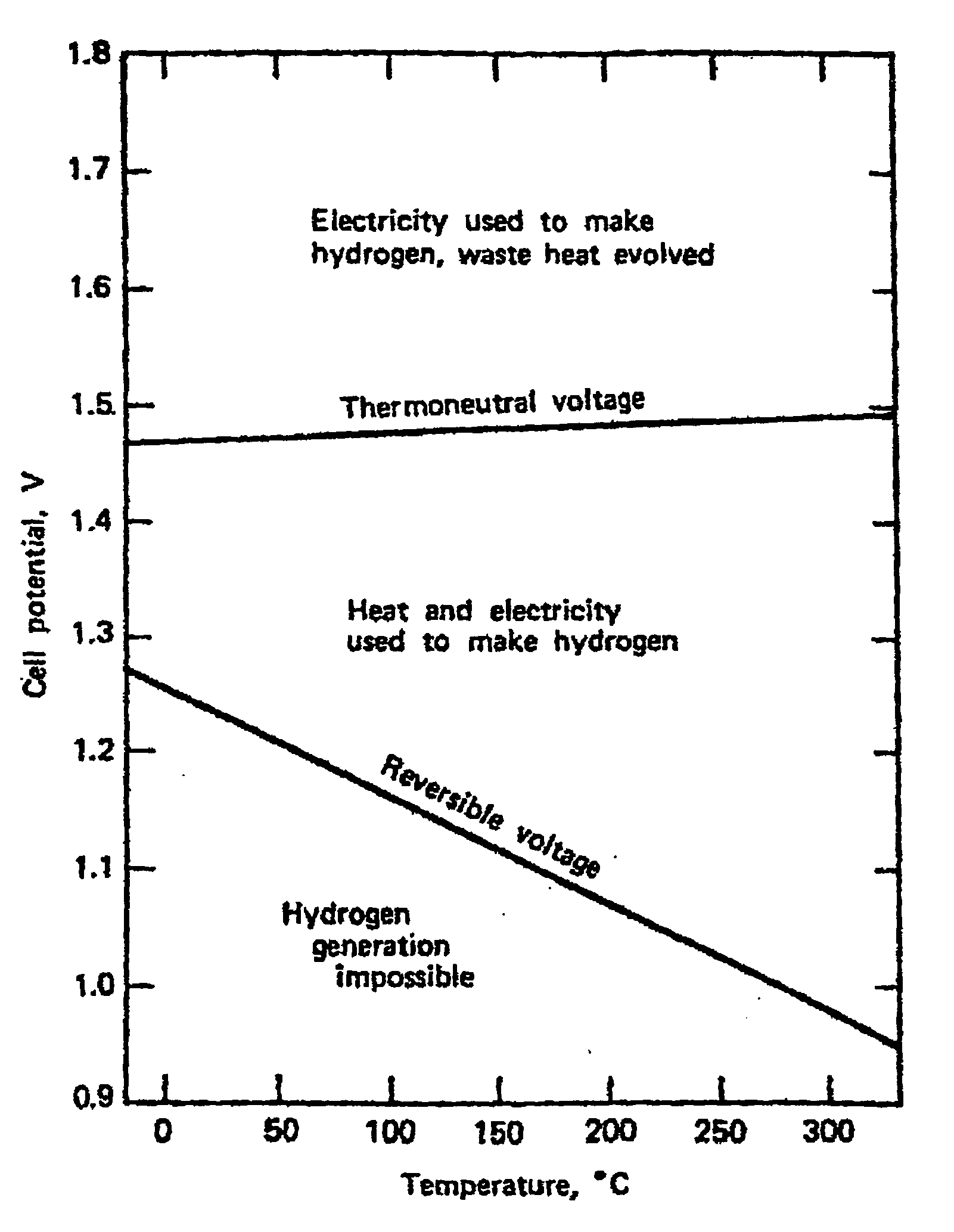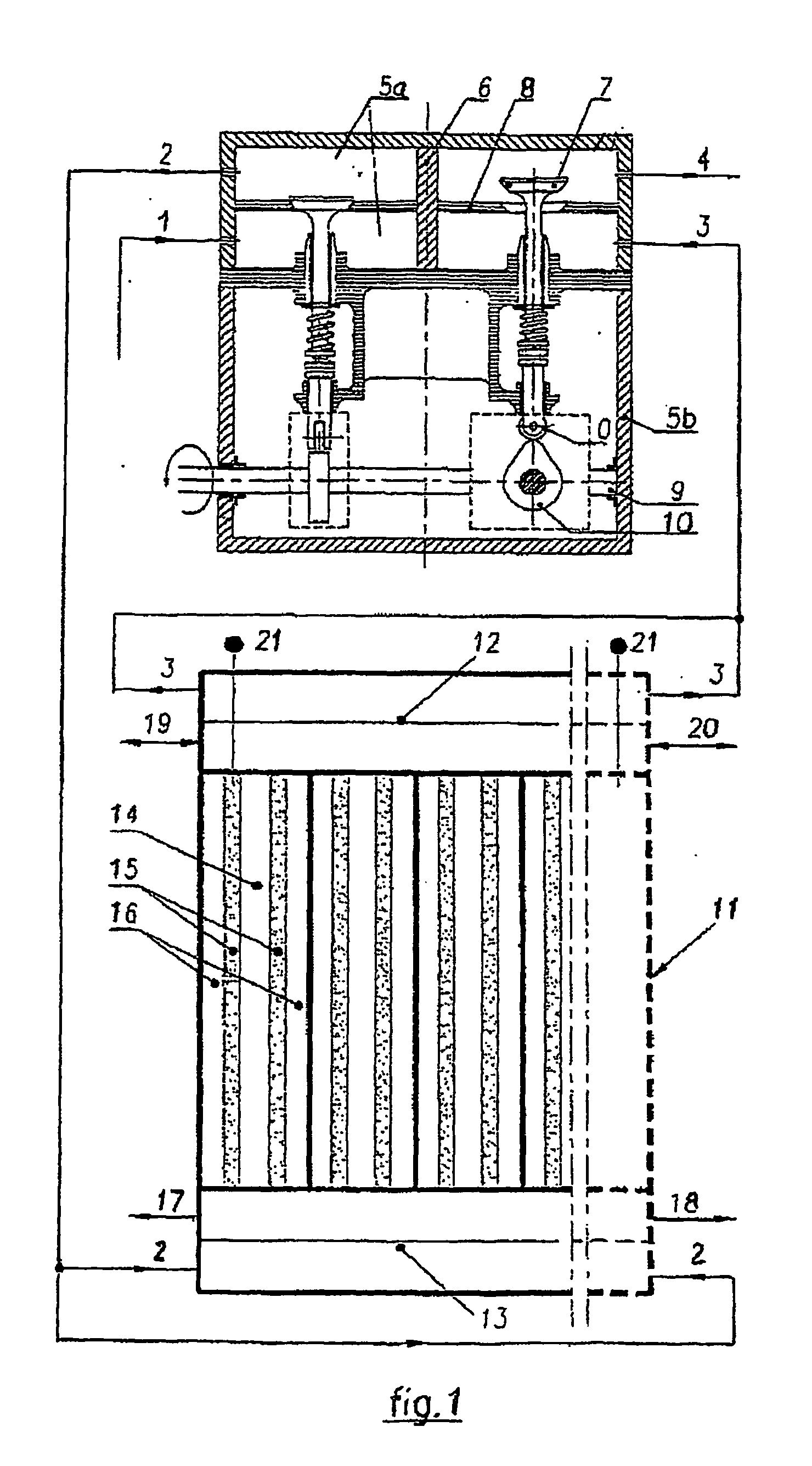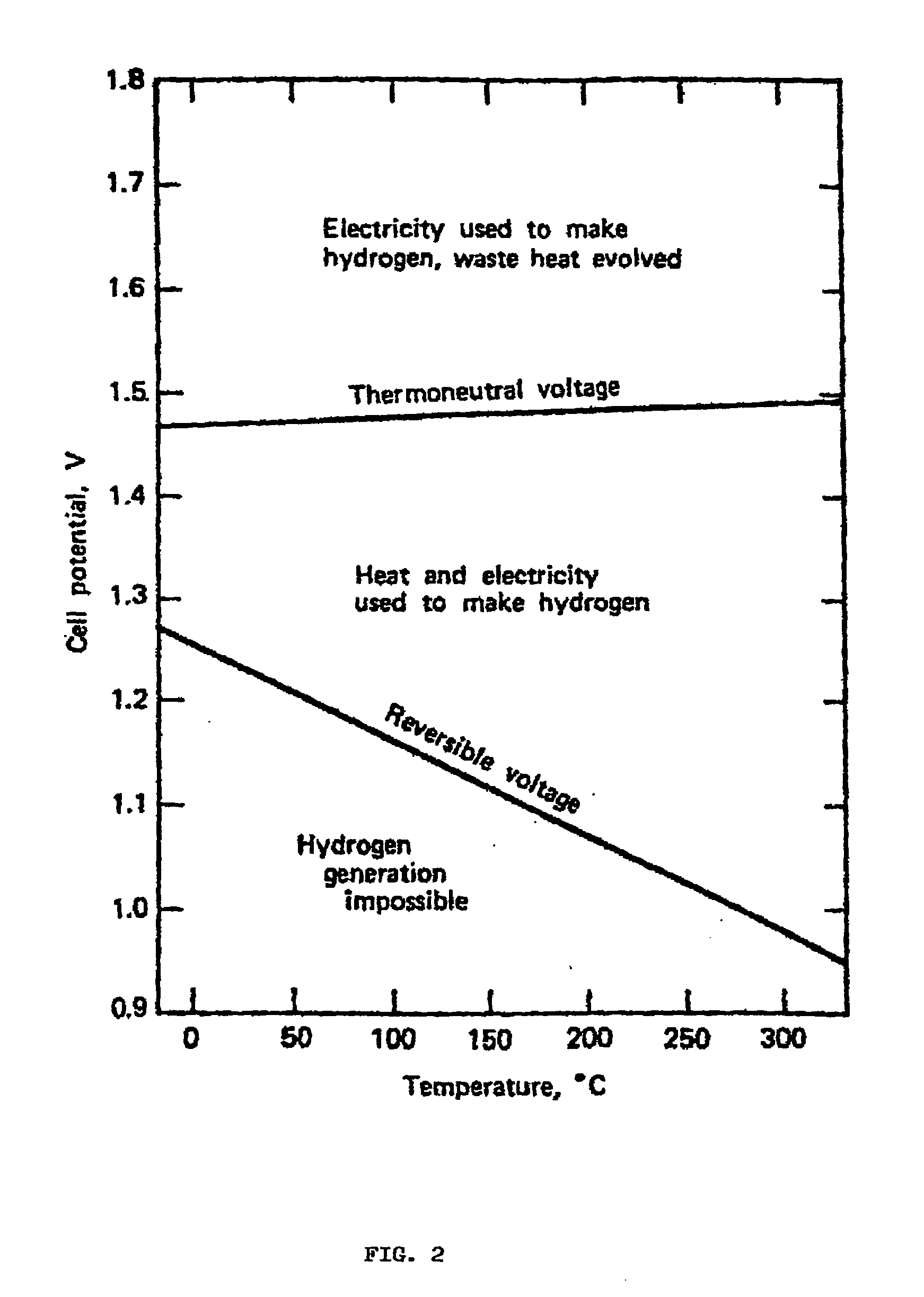Electrochemical thermodynamo
a technology of electrochemical and thermodynamo, which is applied in the field of electrochemical cells, can solve the problems of low efficiency in the energy conversion from electric energy to chemical energy, high cost, and high purity of electrolytic produced hydrogen, and achieve the effect of improving the yield of an electrochemical cell
- Summary
- Abstract
- Description
- Claims
- Application Information
AI Technical Summary
Benefits of technology
Problems solved by technology
Method used
Image
Examples
Embodiment Construction
[0026] Preferred embodiments of the electrochemical module according to the present invention are described in detail below by referring to the accompanying drawings.
[0027] Alkaline fuel cells use an electrolyte that is an aqueous solution of potassium hydroxide (KOH) retained in porous electrodes. The concentration of KOH can be varied with the fuel cell operating temperature, which ranges from 65° C. to 220° C. The charge carrier for an AFC is the hydroxyl ion (OH—) that migrates from the cathode to the anode where they react with hydrogen to produce water and electrons. Water formed at the anode migrates back to the cathode to regenerate hydroxyl ions. The chemical reactions at the anode and cathode in an AFC are shown below. This set of reactions in the fuel cell produces electricity and by-product heat. [0028] Anode Reaction: 2H2+4OH−=>4H2O+4e−[0029] Cathode Reaction: O2+2H2O+4e−=>4OH−[0030] Overall Net Reaction: 2H2+O2=>2H2O
[0031] In the alkaline electrolysis cell, this set ...
PUM
| Property | Measurement | Unit |
|---|---|---|
| pressure | aaaaa | aaaaa |
| pressure | aaaaa | aaaaa |
| temperature | aaaaa | aaaaa |
Abstract
Description
Claims
Application Information
 Login to view more
Login to view more - R&D Engineer
- R&D Manager
- IP Professional
- Industry Leading Data Capabilities
- Powerful AI technology
- Patent DNA Extraction
Browse by: Latest US Patents, China's latest patents, Technical Efficacy Thesaurus, Application Domain, Technology Topic.
© 2024 PatSnap. All rights reserved.Legal|Privacy policy|Modern Slavery Act Transparency Statement|Sitemap



